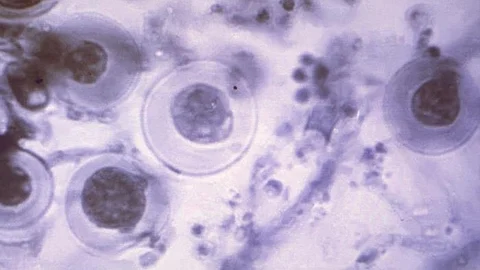“In our work, we suggest that the steps by which organelles are grown — far from being an orderly ‘brick-by-brick’ assembly — occur in stochastic bursts,” said Shankar Mukherji, assistant professor of physics in Arts & Sciences.
“Such bursts fundamentally limit the precision with which organelle size is controlled but also maintain noise in organelle size within a narrow window,” Mukherji said. “Burstlike growth provides a general biophysical mechanism by which cells can maintain, on average, reliable yet plastic organelle sizes.”
Organelles must be flexible enough to allow cells to grow or shrink them as environments demand. Still, the size of organelles must be maintained within certain limits. Biologists have previously identified certain molecular factors that regulate organelle sizes, but this study provides new insights into the quantitative principles underlying organelle size control.


